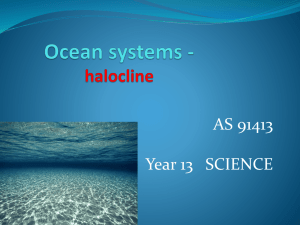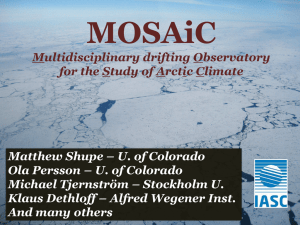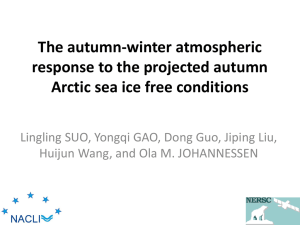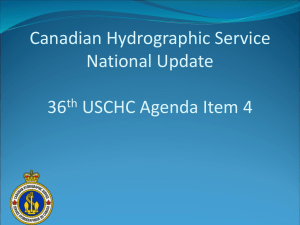Reading Passage
advertisement
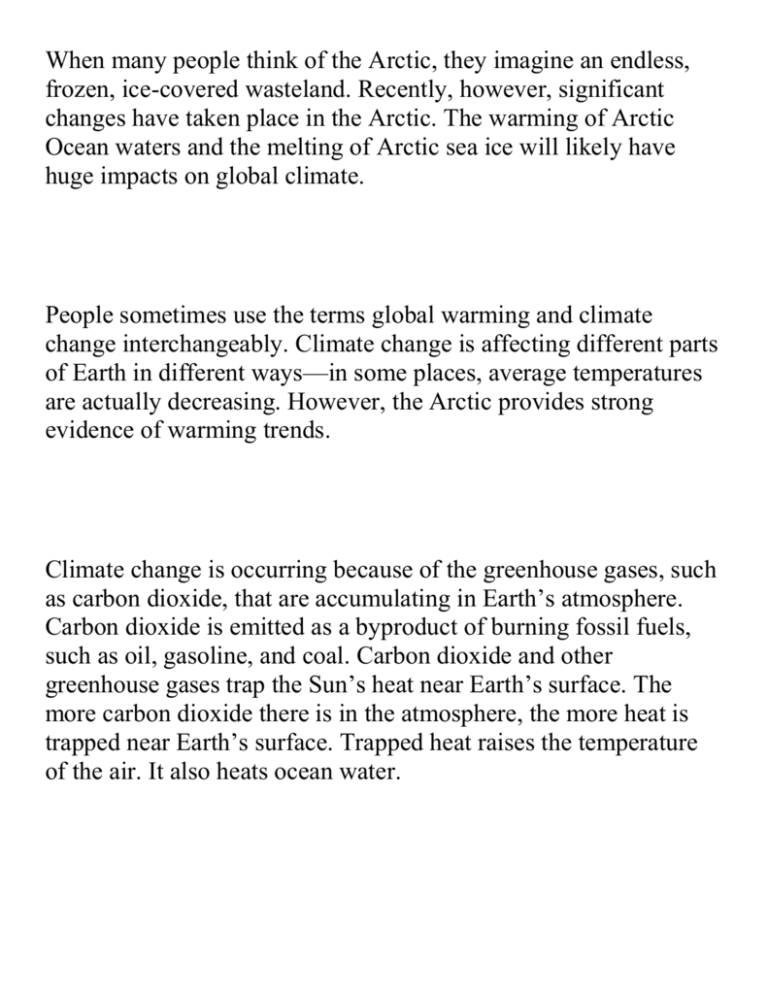
When many people think of the Arctic, they imagine an endless, frozen, ice-covered wasteland. Recently, however, significant changes have taken place in the Arctic. The warming of Arctic Ocean waters and the melting of Arctic sea ice will likely have huge impacts on global climate. People sometimes use the terms global warming and climate change interchangeably. Climate change is affecting different parts of Earth in different ways—in some places, average temperatures are actually decreasing. However, the Arctic provides strong evidence of warming trends. Climate change is occurring because of the greenhouse gases, such as carbon dioxide, that are accumulating in Earth’s atmosphere. Carbon dioxide is emitted as a byproduct of burning fossil fuels, such as oil, gasoline, and coal. Carbon dioxide and other greenhouse gases trap the Sun’s heat near Earth’s surface. The more carbon dioxide there is in the atmosphere, the more heat is trapped near Earth’s surface. Trapped heat raises the temperature of the air. It also heats ocean water. The atmosphere and the ocean are intimately connected. As the air warms, it warms surface ocean water. Warmer surface water is carried to lower regions of the ocean by ocean currents. In addition, ocean water absorbs carbon dioxide from the air. Warmer ocean water absorbs more carbon dioxide. Therefore, carbon dioxide levels also rise in the ocean when these levels rise in the atmosphere. The effects of global warming are most pronounced in the Arctic, where sea ice has been disappearing at an alarming rate. Year after year, for decades, higher sea surface temperatures (SST) in the Arctic Ocean have been melting Arctic sea ice from below. Warmer air temperatures are also melting Arctic sea ice from above. This double effect has thinned summer sea ice alarmingly. Thinner sea ice is more likely to melt than thicker slabs of sea ice. As a result, the ice-covered region of the Arctic has been shrinking each summer. At the current rate of ice melt, scientists predict that summer sea ice is likely to disappear completely, perhaps as soon as 2020. The disappearance of Arctic sea ice is alarming for several reasons. Polar bears need sea ice on which to hunt and to rest. As the Arctic sea ice disappears, polar bear populations are likewise declining. Other forms of Arctic wildlife, such as seals and walruses, are also feeling the negative effects of the lack of sea ice on which to give birth and to rest. Disappearing sea ice also poses a grave threat to the global climate. Ice has a high albedo—in other words, ice is highly reflective. When large regions of summer sea ice covered the Arctic Ocean, the ice reflected most of the sunlight that hit the Arctic away from Earth. This tended to moderate summer temperatures in the Northern Hemisphere. In other words, the ice kept regions all around the Arctic relatively cool. When the ice melts, water in the Arctic Ocean is exposed. Water is dark and has a low albedo, or reflectivity. It does not reflect heat away from Earth. In fact, water tends to absorb heat. As more seawater is exposed by melting sea ice, more heat is absorbed by the Arctic Ocean. The SST of the Arctic Ocean rises. Higher ocean temperatures melt more sea ice. More water is exposed and absorbs more heat, which melts more ice, which exposes more water, which absorbs more heat. This process is known as a positive feedback loop. This is why more summer sea ice is melting every year, and every year the temperature of the Arctic rises. It is important to note that Arctic weather varies naturally from year to year. Some years may be especially hot with lots of melting. Other years may be cooler with less melting. However, the trend over many years is toward increased warming and melting. As the summer Arctic ice melts, it can no longer moderate summer temperatures in the Northern Hemisphere. Scientists have documented hotter, drier summers in many parts of the Northern Hemisphere. Sophisticated computer models link the hotter, drier summers to loss of high-albedo sea ice in the Arctic. Scientists are not clear about whether the trend of melting summer ice in the Arctic can be reversed. Feedback loops may reach a stage where each event amplifies the next event. Eventually, the feedback loop cannot be stopped or reversed. (This event is called the tipping point.) However, Earth may not yet be at that point. There is a chance that warming of the Arctic may be fixable. It is possible to seriously curb human use of fossil-fuel-based energy. People can choose to ride bikes or to drive fuel-efficient cars. Many electric utilities allow customers to buy electricity generated by nonpolluting wind power. Perhaps most importantly, people can demand that their government address the problem aggressively. If citizens insist that their nations and the world take meaningful steps to curb climate change, the Arctic may slowly recover.




